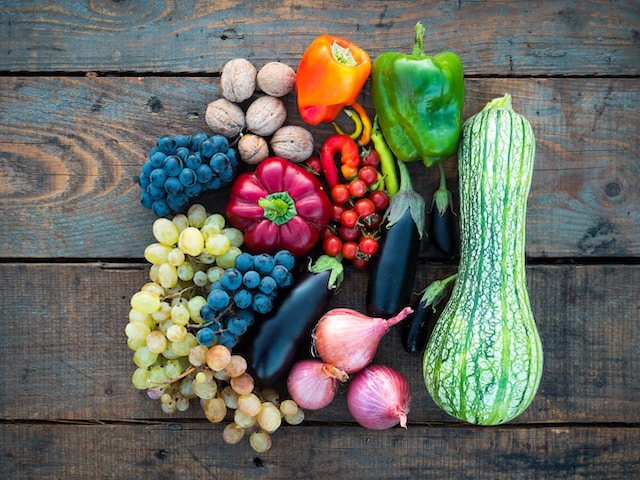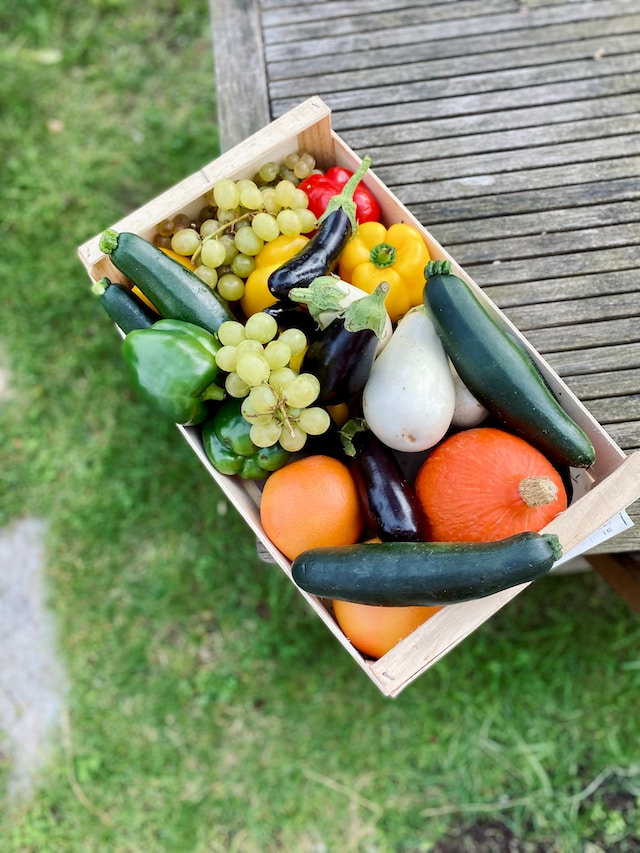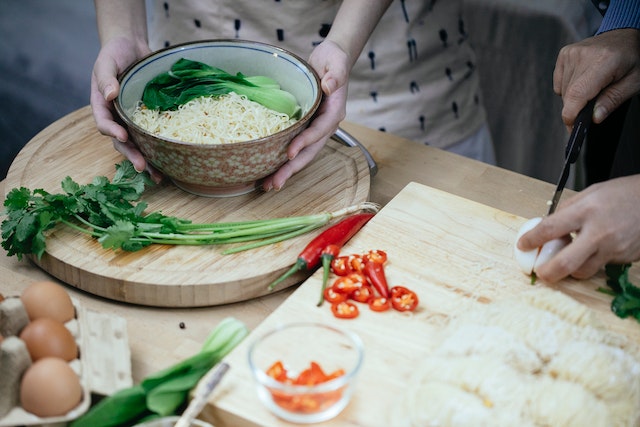
The aroma of fresh ingredients permeated the air, as I stepped into the bustling kitchen. Brightly colored peppers, vibrant greens, and plump tomatoes were neatly arranged in baskets on the counter, ready for the skilled hands of the chefs.
I watched in awe as they artfully sliced and diced, skillfully blending flavors and textures to create culinary masterpieces. The sound of sizzling pans filled my ears, as the chefs used their expertise to coax out the complex notes of each ingredient.
As I took in the sights and sounds of the kitchen, I couldn’t help but feel a sense of awe and respect for the humble ingredients that were the foundation of these dishes. From the crisp snap of a fresh carrot to the tangy sweetness of a perfectly ripened mango, each ingredient was carefully selected for its unique contribution to the dish.
And as I savored the first bite of my meal, I could taste the difference that fresh ingredients made. The flavors were bright and bold, with a depth and complexity that could only come from the highest quality ingredients.
Indeed, there is no substitute for the flavor and vitality that fresh ingredients bring to a dish. And as I left the kitchen, I felt inspired to seek out the best ingredients for my own home-cooked meals, knowing that each ingredient would bring its own unique charm to the dish.
Benefits of Fresh Ingredients
Enhanced flavor and taste
One of the primary benefits of using fresh ingredients in cooking is the enhanced flavor and taste they provide. Unlike canned or processed ingredients, fresh ingredients retain their natural flavors and are able to provide a complex range of flavors that elevate the dish’s taste.

Fresh ingredients provide a depth of flavor that cannot be replicated by processed or canned foods. They are harvested at their optimal ripeness, ensuring that they are packed with nutrients and have the perfect texture. This translates into meals that not only taste good but also are good for you. They are also versatile and can be used in a wide range of dishes. Whether you want to make a light and refreshing salad or a hearty and satisfying stew, fresh ingredients can elevate the flavor profile of your dish while keeping it healthy.
Another benefit of using fresh ingredients is that they allow you to experiment with different flavors and textures. For example, adding fresh herbs like basil, cilantro, and parsley can add a pop of color and flavor to any dish. Similarly, using fresh fruits like pineapple, mango, and papaya can lend a natural sweetness and tropical flavor to your recipes.
Higher nutritional value
Fresh ingredients are loaded with essential nutrients as they are not subjected to any chemical treatment or processing that could strip them of their nutritional value. They are a great source of vitamins, minerals, and micronutrients that boost overall health and well-being.
In addition to the essential vitamins and minerals found in fresh ingredients, they also contain a wide range of antioxidants. Antioxidants are compounds that protect the body from harmful free radicals, which can cause damage to cells and contribute to chronic diseases such as cancer, diabetes, and heart disease.
Fresh ingredients are also rich in fiber, which is essential for digestive health and lowers the risk of chronic diseases. Fiber helps to regulate blood sugar levels, lower cholesterol, and promote satiety, making it an essential nutrient for overall health.
Incorporating fresh ingredients into your diet can also help to support a healthy immune system. Fruits and vegetables are packed with immune-boosting vitamins like vitamin C, which can help protect against infections and support a healthy immune response.
Improved texture and appearance
Fresh ingredients not only taste better but also have a better texture and appearance compared to their processed counterparts. They are visually appealing, and their natural textures add depth and complexity to the dish.
Fresh ingredients have a natural texture that adds depth and complexity to a dish, enticing both the eyes and the taste buds. A fresh iceberg lettuce salad with crisp lettuce leaves, juicy cherry tomatoes, and vibrant red onions adds visual appeal to the dish, and the texture of the crunchy lettuce leaves and juicy tomatoes creates a satisfying bite.
Similarly, using fresh herbs like parsley, cilantro, and chives not only enhances the flavor profile but also adds a pleasing texture to the dish. When cooked, fresh vegetables retain their natural elasticity and firmness, contributing to a dish’s satisfying texture.

A roasted vegetable medley with fresh bell peppers, zucchini, and onion has a delightful texture, with each vegetable contributing its unique texture while retaining its firmness. Ultimately, fresh ingredients not only taste good but also look good, making them a great option for creating visually appealing and delicious meals.
Seasonal Ingredients
As the seasons change, so do the available fruits, vegetables, and herbs. Using seasonal ingredients is not only important for optimal taste and freshness but also ensures that we are consuming produce that is in season and at its peak nutritional value. Here are some tips for selecting, storing, and preparing seasonal produce.
Seasonal fruits, vegetables, and herbs
Seasonal fruits, vegetables, and herbs offer unique flavor profiles and provide optimal nutritional value during their peak growing season. Here are some examples of seasonal produce and some delicious ways to prepare them:
Spring: Asparagus, artichokes, peas, strawberries, and rhubarb are some of the seasonal produce available in the spring. Try grilling asparagus with some olive oil and a sprinkle of sea salt or making a fresh strawberry and rhubarb pie.
Summer: Berries, tomatoes, corn, cucumber, and melons are some of the favorites during the peak of summer. Try making a refreshing cucumber and tomato salad or grilling some summer squash with a sprinkle of herbs.
Fall: Apples, pears, pumpkins, sweet potatoes, Brussels sprouts, and kale are some of the seasonal options during the fall. Try making a hearty sweet potato and kale soup or baking an apple and pear crisp with a sprinkle of cinnamon.

Winter: Citrus fruits like oranges, grapefruits, and lemons shine in the winter months, as do root vegetables like carrots, beets, and parsnips. Try making a comforting bowl of roasted root vegetables with some garlic and rosemary or baking a citrusy lemon and grapefruit pound cake.
Incorporating seasonal produce into your meals not only promotes optimal taste and freshness, but it also supports your local farmers and helps to reduce your carbon footprint.
Benefits of using seasonal ingredients
When produce is in season, it is usually grown and harvested locally, making it more fresh and flavorful. With advancements in transportation, produce can be shipped across the country or even internationally, but this process can result in decreased flavor and nutritional value. Additionally, seasonal produce is usually more affordable since it does not require extensive shipping costs and is in abundance during its peak season.
Selecting, storing, and preparing seasonal produce
As the seasons change, so do the available fruits, vegetables, and herbs. Using seasonal ingredients is not only important for optimal taste and freshness but also ensures that we are consuming produce that is in season and at its peak nutritional value. Here are some tips for selecting, storing, and preparing seasonal produce.
Selecting seasonal produce
Seasonal fruits, vegetables, and herbs offer unique flavor profiles and provide optimal nutritional value during their peak growing season. When shopping for seasonal produce, look for fruits and vegetables that are in their prime and free from bruises or blemishes. Farmers markets and local grocery stores are great places to find fresh and seasonal produce. Consider choosing produce that is grown without harmful chemicals or pesticides to ensure maximum freshness and nutritional value.

Storing seasonal produce
To store seasonal produce, it is important to keep them in a cool, dry place or the refrigerator to preserve their freshness. Some produce, like tomatoes and avocados, can be left at room temperature until they are ripe. Leafy greens like lettuce and spinach should be washed and dried thoroughly before storing in a plastic bag with a damp paper towel to keep them fresh for up to a week.
Preparing seasonal produce
To prepare seasonal produce, keep it simple and let the natural flavors shine. Roasting, grilling, and sautéing are great ways to bring out the natural flavors of seasonal produce. Try adding fresh herbs like basil, rosemary, and thyme for added depth and complexity. Consider making a salad with seasonal ingredients or adding them to your favorite recipe for a healthy and delicious meal.
Farmers’ Market Guide
Farmers’ markets are vibrant and bustling spaces that offer a unique shopping experience for those seeking fresh and locally sourced ingredients. These markets are not only a treasure trove of delicious produce but also a place where you can connect with local farmers, artisans, and food enthusiasts.
Benefits of shopping at farmers’ markets
Freshness: Farmers’ markets offer the freshest produce available since they are often harvested on the same day of the market. This means that the fruits and vegetables have a longer shelf life, retain their nutritional value, and taste better compared to produce from supermarkets or grocery stores.
Supporting local farmers: Shopping at farmers’ markets also supports local farmers and small businesses, helping to strengthen the community’s economy and promote sustainable agriculture practices.
Seasonal produce: Farmers’ markets often offer seasonal produce that is locally grown, which is both affordable and readily available.
Unique varieties: Farmers’ markets provide access to unique varieties of fruits and vegetables that may not be available at supermarkets. You can find heirloom tomatoes, purple carrots, and many more uncommonly found produce that look and taste unique.
Navigating farmers’ markets
Navigating farmers’ markets efficiently requires a bit of know-how and a sense of adventure. To help you navigate the colorful aisles, consider the following tips:
1. Arrive early: Arriving early can help you avoid crowds and have the first pick of fresh produce.
2. Ask questions: Don’t be afraid to ask the farmers about their produce. They can provide information about the produce’s growing conditions, growing methods, and taste.
3. Bring reusable bags: Bring reusable bags to help minimize waste and make it easier to carry your purchases.

4. Plan ahead: Plan your meals ahead of time and make a list of ingredients you need. This helps you focus on what you need and helps you avoid buying anything that should not have been bought in the first place.
5. Use your senses: Use your senses to determine the freshness of the produce. Look for bright colors, listen for the sound of freshness, feel for firmness, and smell for strong, fresh aromas.
There is a reason chefs, home cooks, and food enthusiasts seek out fresh ingredients. The benefits are clear and undeniable. Fresh ingredients make a significant difference in the taste, texture, and overall appeal of any dish. They offer maximum flavor, optimal nutritional value, and an array of health benefits that cannot be found in processed or canned foods. Not only are fresh ingredients more delicious, but they also support local farmers, promote sustainable agriculture practices, and are visually pleasing. So, the next time you are in the market or in your kitchen, let the power of fresh ingredients awaken your senses and inspire your culinary creations. Your taste buds and your body will thank you.
